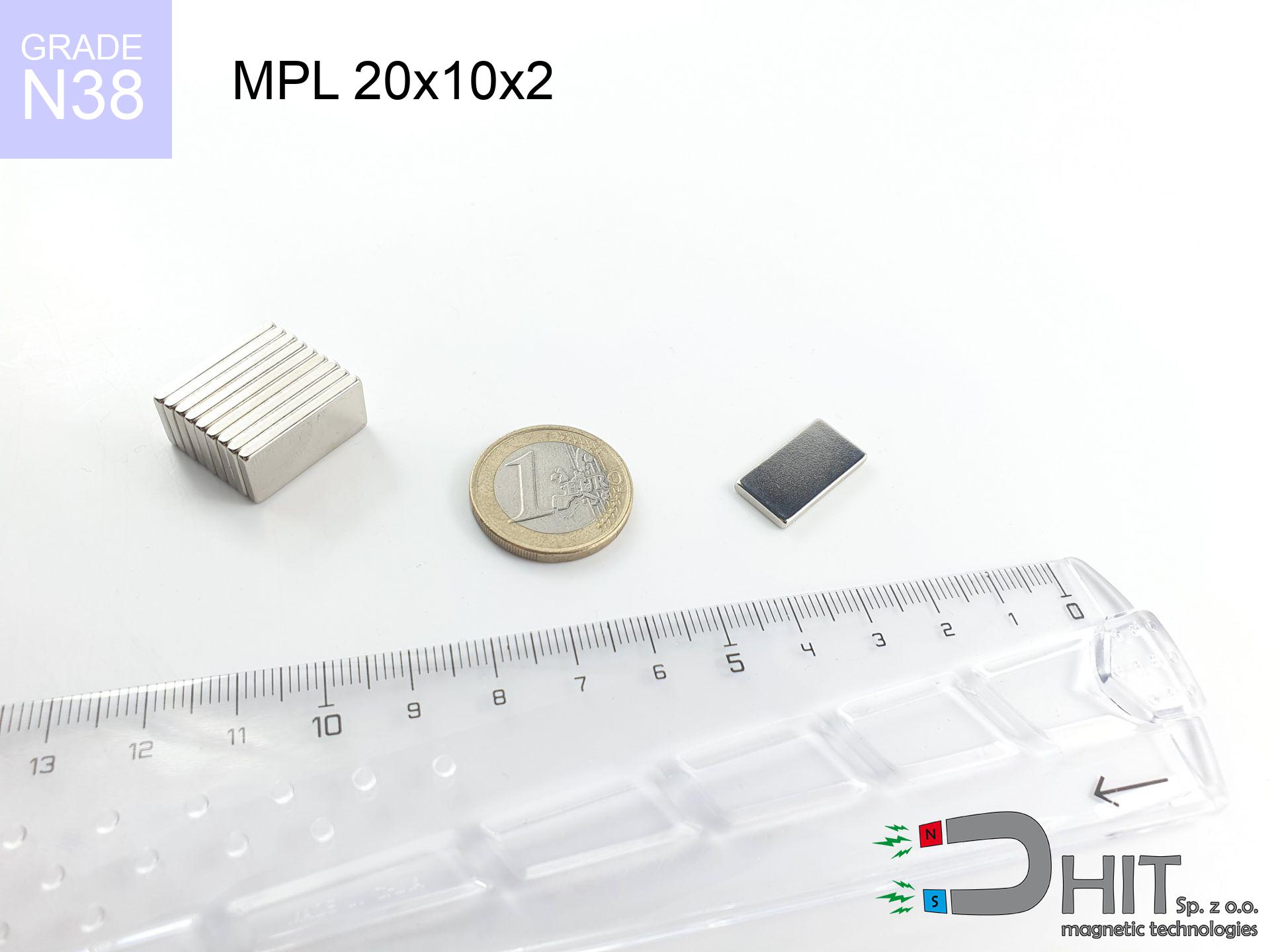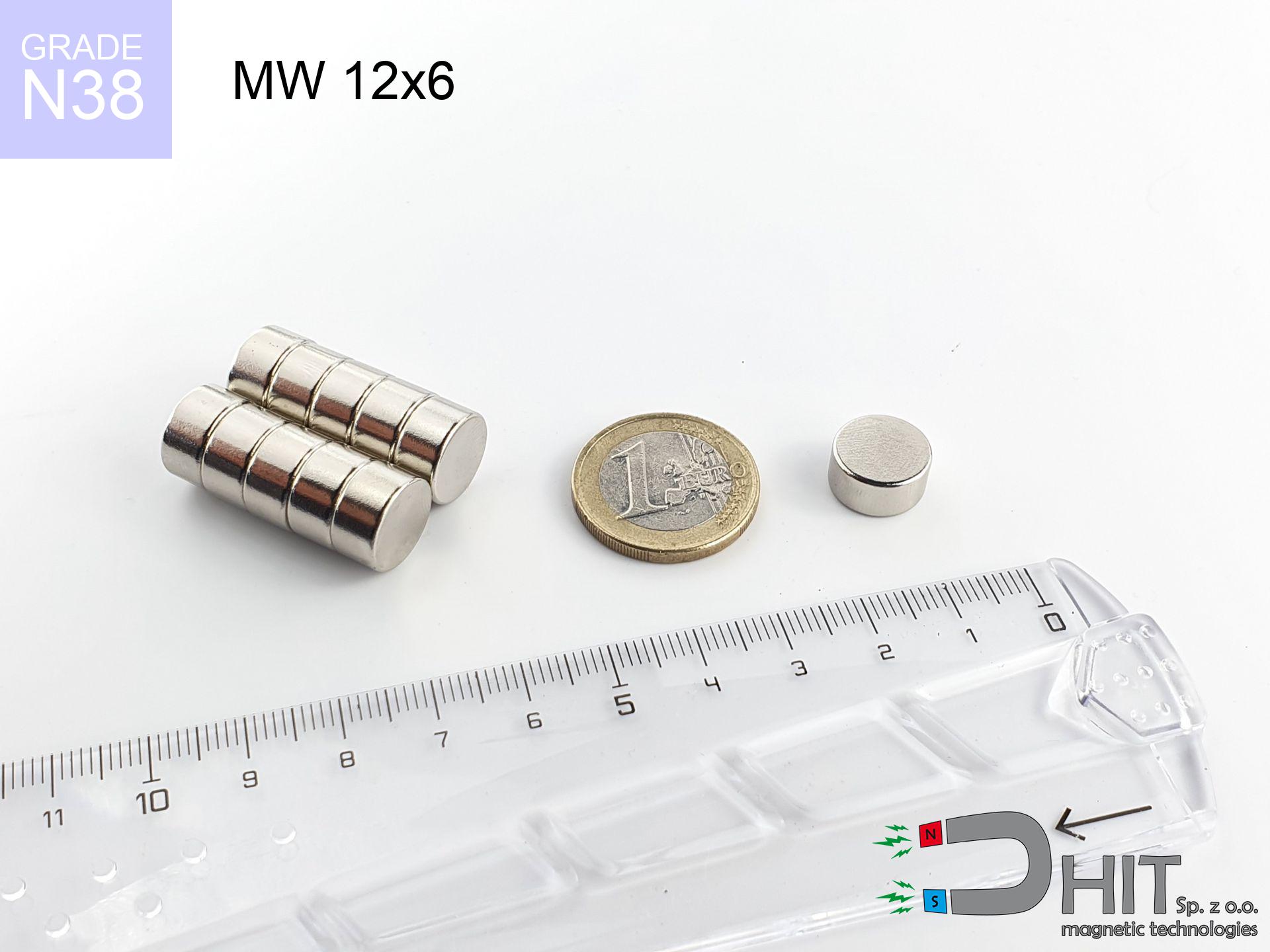UMP 75x25 [M10x3] GW F200 GOLD DUAL Lina / N42 - search holder
search holder
Catalog no 210476
GTIN/EAN: 5906301814139
Diameter Ø
75 mm [±1 mm]
Height
25 mm [±1 mm]
Weight
1800 g
Load capacity
601.00 kg / 5893.80 N
Coating
[NiCuNi] Nickel
Magnetic Flux
~ 20 000 Gauss [±5%]
300.00 ZŁ with VAT / pcs + price for transport
243.90 ZŁ net + 23% VAT / pcs
bulk discounts:
Need more?
Call us
+48 888 99 98 98
if you prefer send us a note through
form
the contact page.
Strength as well as shape of magnets can be calculated on our
online calculation tool.
Order by 14:00 and we’ll ship today!
💡 Check why professionals choose Dhit over cheap substitutes
Don't be fooled by amateur online tests – go for certified quality and specific parameters that guarantee success:
- 📏 Magnet thickness in the casing (min. 10mm) – This is what matters most! Thin magnets are weak. Thanks to the 1cm thickness of N52 neodymium, your magnet "sees" metal even through thick rust and mud.
- 🛡️ Armored protection (Black Epoxy) – Forget about rust. This coating doesn't chip when hitting rocks and protects the magnet in water much better than regular nickel, which fails quickly.
- 🧲 Eyelets that don't steal power – Made of special non-magnetic steel, so they don't stick to the magnet and don't block the force. Important: mount only one eyelet at a time! Using 3 at once is a mistake that weakens the magnet.
- 🧶 Certified rope (min. 8mm) – You gain the certainty that your gear won't stay at the bottom. It's thick and comfortable, so it doesn't cut your fingers when pulling out heavy scrap metal.
- 🚀 Our advantage: We are the only ones combining the strongest N52 neodymium (10mm thick) with non-magnetic eyelets. This is real power and durability you won't find anywhere else.
Invest in solid equipment and enjoy the results!
Double active surface: More space to attract objects.
Versatility: Possibility to use two mounts separately or together.
Double power potential: Theoretically, it offers double the attracting area.
Better durability: Lower risk of mechanical damage.
Great price-performance ratio: An economical choice for serious magnet fishers.
For maximum efficiency, the Dual version is highly recommended.
Technical specification of the product - UMP 75x25 [M10x3] GW F200 GOLD DUAL Lina / N42 - search holder
Specification / characteristics - UMP 75x25 [M10x3] GW F200 GOLD DUAL Lina / N42 - search holder
| properties | values |
|---|---|
| Cat. no. | 210476 |
| GTIN/EAN | 5906301814139 |
| Production/Distribution | Dhit sp. z o.o. |
| Country of origin | Poland / China / Germany |
| Customs code | 85059029 |
| Diameter Ø | 75 mm [±1 mm] |
| Height | 25 mm [±1 mm] |
| Weight | 1800 g |
| Load capacity ~ ? | 601.00 kg / 5893.80 N |
| Coating | [NiCuNi] Nickel |
| Series | GOLD |
| Holder Type | 4 sided |
| Material Type | Structural steel S235 (ferrous) |
| Magnetic Flux | ~ 20 000 Gauss [±5%] |
| Rope Length | 25 m |
| Rope Capacity | ~ 1595 kg |
| Rope Diameter | Ø 8 mm |
| Gloves | 1 pair |
| Size/Mount Quantity | 4xM10 |
| Manufacturing Tolerance | ±1 mm |
Magnetic properties of material N42
| properties | values | units |
|---|---|---|
| remenance Br [min. - max.] ? | 12.9-13.2 | kGs |
| remenance Br [min. - max.] ? | 1290-1320 | mT |
| coercivity bHc ? | 10.8-12.0 | kOe |
| coercivity bHc ? | 860-955 | kA/m |
| actual internal force iHc | ≥ 12 | kOe |
| actual internal force iHc | ≥ 955 | kA/m |
| energy density [min. - max.] ? | 40-42 | BH max MGOe |
| energy density [min. - max.] ? | 318-334 | BH max KJ/m |
| max. temperature ? | ≤ 80 | °C |
Physical properties of sintered neodymium magnets Nd2Fe14B at 20°C
| properties | values | units |
|---|---|---|
| Vickers hardness | ≥550 | Hv |
| Density | ≥7.4 | g/cm3 |
| Curie Temperature TC | 312 - 380 | °C |
| Curie Temperature TF | 593 - 716 | °F |
| Specific resistance | 150 | μΩ⋅cm |
| Bending strength | 250 | MPa |
| Compressive strength | 1000~1100 | MPa |
| Thermal expansion parallel (∥) to orientation (M) | (3-4) x 10-6 | °C-1 |
| Thermal expansion perpendicular (⊥) to orientation (M) | -(1-3) x 10-6 | °C-1 |
| Young's modulus | 1.7 x 104 | kg/mm² |
Material specification
| iron (Fe) | 64% – 68% |
| neodymium (Nd) | 29% – 32% |
| boron (B) | 1.1% – 1.2% |
| dysprosium (Dy) | 0.5% – 2.0% |
| coating (Ni-Cu-Ni) | < 0.05% |
Sustainability
| recyclability (EoL) | 100% |
| recycled raw materials | ~10% (pre-cons) |
| carbon footprint | low / zredukowany |
| waste code (EWC) | 16 02 16 |
View more products
Advantages as well as disadvantages of Nd2Fe14B magnets.
Strengths
- Their strength remains stable, and after approximately ten years it decreases only by ~1% (theoretically),
- They show high resistance to demagnetization induced by external disturbances,
- The use of an shiny layer of noble metals (nickel, gold, silver) causes the element to have aesthetics,
- Magnets exhibit impressive magnetic induction on the outer side,
- Neodymium magnets are characterized by extremely high magnetic induction on the magnet surface and can function (depending on the shape) even at a temperature of 230°C or more...
- Thanks to flexibility in forming and the capacity to modify to client solutions,
- Wide application in electronics industry – they serve a role in magnetic memories, brushless drives, precision medical tools, and multitasking production systems.
- Relatively small size with high pulling force – neodymium magnets offer impressive pulling force in tiny dimensions, which enables their usage in compact constructions
Limitations
- They are fragile upon heavy impacts. To avoid cracks, it is worth securing magnets using a steel holder. Such protection not only shields the magnet but also improves its resistance to damage
- We warn that neodymium magnets can reduce their power at high temperatures. To prevent this, we recommend our specialized [AH] magnets, which work effectively even at 230°C.
- Due to the susceptibility of magnets to corrosion in a humid environment, we recommend using waterproof magnets made of rubber, plastic or other material resistant to moisture, when using outdoors
- Due to limitations in creating threads and complex forms in magnets, we recommend using a housing - magnetic mechanism.
- Potential hazard to health – tiny shards of magnets can be dangerous, if swallowed, which is particularly important in the context of child safety. It is also worth noting that small elements of these products are able to disrupt the diagnostic process medical when they are in the body.
- Higher cost of purchase is a significant factor to consider compared to ceramic magnets, especially in budget applications
Holding force characteristics
Detachment force of the magnet in optimal conditions – what it depends on?
- on a plate made of structural steel, perfectly concentrating the magnetic flux
- whose thickness equals approx. 10 mm
- characterized by smoothness
- under conditions of gap-free contact (surface-to-surface)
- for force applied at a right angle (pull-off, not shear)
- at conditions approx. 20°C
Practical lifting capacity: influencing factors
- Gap between magnet and steel – even a fraction of a millimeter of distance (caused e.g. by veneer or dirt) drastically reduces the pulling force, often by half at just 0.5 mm.
- Loading method – catalog parameter refers to detachment vertically. When applying parallel force, the magnet exhibits much less (often approx. 20-30% of nominal force).
- Wall thickness – the thinner the sheet, the weaker the hold. Magnetic flux passes through the material instead of converting into lifting capacity.
- Material type – ideal substrate is high-permeability steel. Stainless steels may attract less.
- Surface finish – ideal contact is possible only on polished steel. Any scratches and bumps create air cushions, reducing force.
- Temperature – temperature increase causes a temporary drop of induction. Check the maximum operating temperature for a given model.
Holding force was measured on the plate surface of 20 mm thickness, when the force acted perpendicularly, in contrast under parallel forces the holding force is lower. Moreover, even a slight gap between the magnet and the plate reduces the holding force.
H&S for magnets
Nickel allergy
Some people have a contact allergy to nickel, which is the typical protective layer for NdFeB magnets. Prolonged contact can result in an allergic reaction. It is best to use safety gloves.
Risk of cracking
Despite the nickel coating, the material is delicate and cannot withstand shocks. Do not hit, as the magnet may crumble into sharp, dangerous pieces.
Implant safety
Health Alert: Neodymium magnets can deactivate pacemakers and defibrillators. Do not approach if you have medical devices.
Flammability
Fire warning: Neodymium dust is explosive. Do not process magnets in home conditions as this may cause fire.
Demagnetization risk
Keep cool. NdFeB magnets are sensitive to temperature. If you require operation above 80°C, look for HT versions (H, SH, UH).
Caution required
Be careful. Rare earth magnets act from a long distance and connect with huge force, often quicker than you can react.
Crushing force
Risk of injury: The pulling power is so immense that it can result in hematomas, crushing, and even bone fractures. Use thick gloves.
Adults only
Always store magnets out of reach of children. Ingestion danger is high, and the effects of magnets clamping inside the body are tragic.
Electronic devices
Avoid bringing magnets near a wallet, computer, or TV. The magnetic field can permanently damage these devices and wipe information from cards.
GPS and phone interference
Remember: neodymium magnets produce a field that disrupts precision electronics. Maintain a safe distance from your phone, tablet, and GPS.

![Fishing magnet UMP 75x25 [M10x3] GW F200 GOLD DUAL Lina / N42 - GOLD Series Fishing magnet UMP 75x25 [M10x3] GW F200 GOLD DUAL Lina / N42 - GOLD Series](https://cdn3.dhit.pl/graphics/banners/magnet.webp)
![UMP 75x25 [M10x3] GW F200 GOLD DUAL Lina / N42 - search holder](https://cdn3.dhit.pl/graphics/products/ump-75x25-m10x3-gw-f200-gold-x2-lina-car.jpg)
![UMP 75x25 [M10x3] GW F200 GOLD DUAL Lina / N42 - search holder - ujęcie 2](https://cdn3.dhit.pl/graphics/products/ump-75x25-m10x3-gw-f200-gold-dual-lina-wig.jpg)
![UMP 75x25 [M10x3] GW F200 GOLD DUAL Lina / N42 - search holder - ujęcie 3](https://cdn3.dhit.pl/graphics/products/ump-75x25-m10x3-gw-f200-gold-dual-lina-vup.jpg)
![UMGZ 16x13x5 [M4] GZ / N38 - magnetic holder external thread UMGZ 16x13x5 [M4] GZ / N38 - magnetic holder external thread](https://cdn3.dhit.pl/graphics/products/um-16x13x5-m4-gz-cor.jpg)
![SM 25x325 [2xM8] / N52 - magnetic separator SM 25x325 [2xM8] / N52 - magnetic separator](https://cdn3.dhit.pl/graphics/products/sm-25x325-2xm8-bit.jpg)



